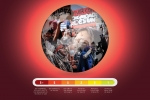By Own Correspondent
The Zimbabwe National Statistics Agency (ZIMSTAT) says the unemployment rate increased by just 1,3% in the third quarter of 2023 pushing the aggregate unemployment rate to 19,7% despite excessive unemployment, precarious jobs and informality bedevilling the nation.
The government controlled agency’s ratings ignore the fundamentals of decent work and considers most people in the informal economy where decent work deficits are prevalent to be gainfully employed.
The Third Quarter Labour Force Survey (3QLFS) also reveals that just a tiny proportion of the country’s citizens are unemployed.
“The unemployment rate rose by 1, 3 percentage points from 19,7% in 2nd quarter 2023 to 21 % in third quarter 2023. Unemployment in 3rd quarter 2023 was more pronounced in females 24% compared to males 19%,” the report said.
The 3 QLFS also shows that Harare province had an employment-to-population ratio of 47,9% and Bulawayo province was at 47,1%.
The 2023 third quarter employment to population ratio decreased by 1,2% points compared to the 2nd quarter of 2023.
The National employment-to-population ratio (EPR) during the period increased by 0,9 points to 34, 9 % in the third quarter of 2023 from 34 % in the same quarter last year with the rise implying that the proportion of working-age population (15 years and above) in employment increased by 0, 9 percentage point on a year-on-year comparison,” the report said.
According to market analysts, EPR is a macroeconomic statistic that measures the civilian labour force currently employed against the total working-age population of a region, municipality, or country. It is viewed as a broad metric of labour unemployment.
It is often calculated by dividing the number of people employed by the total number of people of working age.
During the period, employment in the informal sector (non-agriculture) increased by 4, 1 %.
In contrast, agriculture sector employment declined by 5,8 percentage points during the same period.
The formal sector (non-agriculture) and household sector recorded marginal gains in employment during the same period at 0,8 and 0,7 percentage points respectively.
The employment-to-population ratio for persons in urban areas was 48,5% while for rural areas the ratio was 27%.
For females in rural areas, employment to population ratio was 18.1 percent while for males in rural areas the rate was 36.5 percent








Leave a comment